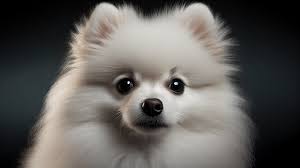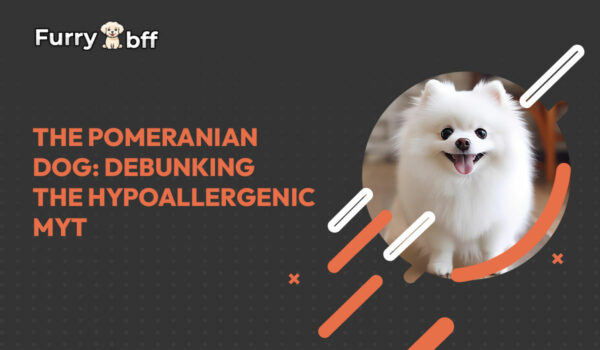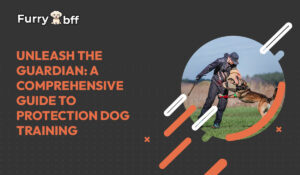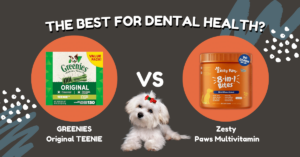The Pomeranian dog is a delightful and popular toy breed known for its fluffy coat and charismatic personality. Many prospective dog owners wonder if the Pomeranian is hypoallergenic, making it a suitable choice for individuals with allergies. In this blog, we will explore the truth behind the hypoallergenic status of Pomeranians and shed light on essential considerations for allergy sufferers interested in welcoming these adorable companions into their homes.
Understanding Hypoallergenic Dogs
To comprehend the hypoallergenic status of Pomeranians, it is essential to understand the term “hypoallergenic.” While it implies that a dog breed is less likely to cause allergies, no dog breed is truly hypoallergenic. Allergens such as dander, saliva, and urine are present in all dogs, including Pomeranians. Still, certain breeds may produce fewer allergens or have coats that shed less, reducing the risk of allergic reactions.
Pomeranian dogs have long and thick fur, which can naturally make them appear allergic. However, unlike other breeds, their fur is not the primary reason that can trigger allergy symptoms. The primary cause of allergies in dogs comes from a protein called Can F1, which is found in their saliva and dander. Since Pomeranians shed very little hair, less dander is produced; they are considered hypoallergenic.
Unfortunately, you can’t eliminate the chances of allergic reactions with every breed. And if you are allergic to dogs, it’s best to ensure you do not have an allergic reaction to a Pomeranian. Spending time around a Pomeranian before adopting or buying one is always a good idea. This is because each person’s allergic reactions are different and vary in severity. Also, remember that if you are allergic to one dog breed, you may not be allergic to another.

Pomeranian Coat Characteristics
The Pomeranian dog‘s coat is one of its most distinctive and appealing features. This toy breed’s luxurious double coat is a defining characteristic contributing to its adorable and fluffy appearance. Here are the critical coat characteristics of the Pomeranian:
Double Coat
Pomeranians have a double coat, which means they possess two layers of fur. The double coat comprises a soft, dense undercoat and a longer, harsher outer coat. Combining these two layers creates the Pomeranian’s iconic fluffiness and volume.
Soft Undercoat
The undercoat of the Pomeranian is soft, dense, and plush, designed to provide insulation and protection from cold temperatures. This layer of fur keeps the dog warm in colder climates and can be more pronounced during winter.
Harsh Outer Coat
The outer coat of the Pomeranian is longer and straighter, with a texture that feels coarse or harsh to the touch. The purpose of the outer coat is to act as a protective barrier against the elements and potential hazards.
Profuse Mane
The fur around the neck and chest of the Pomeranian is particularly lavish, creating the appearance of a mane. This thick mane gives the breed an elegant and regal look.
Plumed Tail
Pomeranians have a well-feathered tail that lies flat over their back. The tail’s plumed appearance adds to the breed’s charm and elegance.
Ruff of Fur
Around the neck area, Pomeranians often have a “ruff” of fur, which is longer and thicker than the rest of their coat. This ruff frames their face and gives them a distinctive and expressive appearance.
Coat Colors and Patterns
Pomeranians come in various coat colors and patterns, adding to their visual appeal. Standard coat colors include orange, black, white, cream, blue, chocolate, sable, and more. Some Pomeranians also exhibit parti-color or merle patterns.
Shedding
Pomeranians are moderate shedders. They shed throughout the year with seasonal variations, particularly during the spring and fall when they experience a heavier shed. Regular grooming can help manage shedding and keep their coat in good condition.
The Pomeranian’s double coat, with its soft undercoat and more extended, harsh outer coat, is a standout feature that defines this beloved toy breed. The breed’s profuse mane, plumed tail, and ruff of fur around the neck contribute to their overall charm and elegance. Pomeranians come in various coat colors and patterns, making each dog unique and visually captivating. Regular grooming and coat care are essential to maintain the Pomeranian’s fluffy and appealing appearance.
Allergenic Triggers
Allergens found in Pomeranian dander and saliva can trigger allergies in susceptible individuals. Although Pomeranians are not among the breeds known for excessive shedding, their dander and allergens can still cause allergic reactions in some people.

Grooming for Allergen Reduction
Regular grooming is crucial for managing allergens in Pomeranians. Frequent brushing, at least three to four times a week, helps remove loose hair and reduces dander buildup. Using a high-quality, hypoallergenic dog shampoo during baths can also aid in minimizing allergens on their coat and skin.
Pet Allergy Testing
Individuals with allergies should consider undergoing pet allergy testing before bringing a Pomeranian or any other dog breed into their home. This testing can identify specific allergens that trigger reactions, helping potential owners make an informed decision about pet ownership.
Allergy Management
Managing pet allergies goes beyond selecting a hypoallergenic breed. Allergy sufferers should create a pet-friendly environment by keeping the home clean, using air purifiers, and designating areas where the dog is allowed. Regular vacuuming and cleaning can help reduce allergens in the living space.
Conclusion
While the Pomeranian dog is not hypoallergenic in the true sense, some individuals with mild allergies may find them more tolerable than other dog breeds. Their moderate shedding and fluffy coat produce allergens, but regular grooming can help manage these triggers. For those with severe allergies, it is essential to consult with an allergist and consider allergy management strategies before welcoming a Pomeranian or dog into their home. Ultimately, the decision to bring a Pomeranian into your life should be based on compatibility, lifestyle, and ability to provide a loving and caring home for these charming and affectionate companions.
For more blogs, check out, Potty Training a Havanese Puppy: A Step-by-Step Guide to Success.









